This article about the "Invasive Plants of Canada" gives you a snapshot into some of the nastiest plants that are threatening our wetlands, forests, gardens and ecosystems. Below you will find 18 plants, bushes, vines and trees. Each is presented in alphabetic order. You may also wish to read about the "Invasive Insects of Canada" in this blog. These bugs are even a greater threat. Links with additional information, resources, maps and reporting sites can be found at the bottom of this article. Black Alder (European)Black Alder (European) (Alnus glutinosa) is a tree in the birch family that can grow up to 15 m tall with the crown spreading from 6-12 m wide. It can be single or multi-stemmed, with a smooth greyish-green bark that turns a speckled grayish-brown. It is native across Europe, Asia, and Africa. The leaves are simple, alternate and double toothed. It has been planted extensively in North America as an ornamental tree and for erosion control. They flower in the spring and remain on the trees through the fall. They grow on a wide range of soils and can form monotypic stands. Although it can tolerate drought, it prefers moist, damp conditions, especially near water sources. It commonly grows in wetlands and along ponds and lakes. It also grows in forests, forest wetlands and in urban areas. Black Alder is a threat to wetland and riparian species and habitats in Ontario. Its aggressive and rapid growth shades out native tree species. It is a nitrogen-fixing plant converting atmospheric nitrogen and adding it to the soil. This chemical change makes it difficult for some native species to survive and encourages the growth of other non-native invasive species. Buckthorn (Common & Glossy) Common & Glossy Buckthorn (Frangula alnus) was brought to North America in the late 1800's as an ornamental shrub. It was first recorded in Canada in London in 1898 and Ottawa in1899. By 1975 Common (or European) Buckthorn had spread quickly and aggressively across most of southern Ontario. It usually grows to be around 2-3 m but can reach up to 6m. It looks more like a tree than a shrub. They have oval serrated leaves that have veins curving down towards the tip and small yellow/green flowers with four petals. In summer it produces green berries that turn dark red then to black in late summer to early fall. The fruit is poisonous to most animals but birds eat them and may be largely responsible for the spread of Glossy Buckthorn as they scatter the unscathed seeds in their droppings. Common Buckthorn produces large a number of seeds that germinate and grow quickly, dominating forests and shading out native plants. It alters the soil nitrogen composition to create better conditions for its own growth and the detriment of other plants. It does not provide the same quality of habitat and protection for birds that native shrubs do. Buckthorn hosts oat rust, a fungus that causes leaf rust which affects the yield and quality of oats. The soybean aphid that destroys soybean crops uses buckthorn to survive the winter. Due to the agricultural threat Buckthorn is listed as a noxious weed under Ontario’s Weed Control Act. To control Common Buckthorn the fruit bearing female plants should be initially targeted, as they carry seeds. Young saplings can be pulled or treated with herbicide Common Reed (Phragmites) Common Reed (Phragmites australis) is a species of invasive phragmites that invades ditches, streams, and wetlands. It grows up to 5 m with light tan stalks, long upright blue-green leaves and dense fringed seed heads. Invasive phragmites grow densely preventing any other vegetation from growing. The toxin from its roots kills any vegetation that may be competing for resources. The fast growing plant sucks up large amount of water dropping the water levels. Stands of phragmites consist of many dry dead plants posing a fire hazard. It decreases biodiversity of native wildlife, as it is not a suitable habitat or food source. The dense seed head makes it is very easy to spread the plant. It spreads often by extending root like stolons. Removing the plant as early as possible is extremely important. Large areas can be difficult to contain and remove. Herbicides can effectively control phragmites, however, there can be many undesirable consequences on the surrounding ecosystem. Invasive Phragmites has been identified as Canada’s worst invasive species by the Canada Food Inspection Agency. It outcompetes native species such as cattails, rapidly replacing native plant communities with a monoculture. Distinguishing between the species of Phragmites can be challenging, some suggest that populations growing in dense patches are nearly always the invasive Phragmites. Dog-Strangling Vine (Swallowwort) Dog-Strangling Vine (Cynanchum rossicum) refers to two invasive species of Swallowwort (Pale and Black Swallowwort). It can climb up trees and tall plants and form dense mats that run along the ground strangling out other vegetation. Dog strangling vine has oval leaves with pointed tips that are usually between 7-12 cm long. The flowers are small, pink to dark purple and star shaped. The 2-8 cm long bean-shaped pods release white feather-like seeds spreads through the wind. Leaves and roots can be toxic to livestock, deer and other browsing animals. Native wildlife will not eat Dog-Strangling vine which increases grazing pressure on the diminishing native vegetation. Dense patches of the vine create thick mats running along the ground preventing native plants from growing and make it extremely difficult to walk through or manage the forest. It is difficult to completely remove dog strangling vine because of the extensive root system; if the roots are not excavated it will re-sprout. Frequent cutting back will prevent the spreading of seeds. After removal of dog strangling vine, native plants should be planted to prevent reinvasions and new invasive species from taking hold. In the Great Lakes Basin, its invasive ways are disturbing native birds and plants. It is a threat to butterflies as it interferes with the native hosts in the area. There are no control methods that stop the spreading. In Canada the release of a moth (Hypena opulenta), which feeds on the plant was authorized in 2013 to act as a bio-control. English Ivy English Ivy (Hedera helix) is an evergreen vine is a smothering invasive plant in much of southwestern BC. It is commonly planted to provide quick cover for walls and buildings, and as ground cover in commercial landscapes. It quickly forms a dense monoculture groundcover completely engulf shrubs and encircling tree trunks of all sizes, leaving nothing uncovered. Shrubs shrouded in ivy may eventually die because light can't reach their leaves. It attaches to tree bark, brick and other surfaces by root-like structures that exude a glue-like substance to help it adhere. English Ivy grows rapidly and needs very little light or water once it's established. It even grows during the winter. English Ivy has dull green, lobed leaves with light veins that grow alternately along trailing or climbing stems. Leaves are typically green with whitish veins, deep to shallow lobes and range from small, narrow leaves to large, broadly shaped leaves. Ivy leaves also have a thick, waxy coating that helps them to cling to almost any surface. Older vines can be tree-like and as much as five inches thick. Flowering occurs late summer to early fall. Flowers are small, greenish-yellow and are globular starburst at tips of flowering stems. Fruit is black with a fleshy outer layer and stone-like seeds. New plants grow easily from cuttings or stem fragments that make contact with the soil. English Ivy is aggressive threatening all levels of forested and open areas, growing along the ground and into the forest canopy. An infested tree will exhibit decline for years before it dies. The weight of vines also makes trees susceptible to blowing over in storms. English Ivy has been confirmed as a reservoir for bacterial leaf scorch (Xylella fastidiosa), which affects a wide variety of trees. European Spindle Tree European Spindle Tree (Euonymus europaeus) also known as Winged Euonymus is distinctly different from Ontario’s rare and native burning bush or eastern wahoo. It is a dense, outward-arching shrub imported from Japan and produces abundant small red seed capsules with orange seeds on short stems that persist into the winter. Flowers are small, greenish-yellow with 4 petals. Stems are distinctively 4-winged, appearing square-stemmed. Best features are its showy fall fruit and superb fall leaf color. It grows rapidly to 3-7m (occasionally to 10m) tall. Small, yellowish-green flowers (1cm across) bloom in 3-5 flowered cymes from late April to June. Flowers are followed by extremely showy. Pinkish-red capsules split open in fall to reveal tiny seeds, each of which is encased in a fleshy orange aril. Seeds are attractive to certain birds that eat and distribute them. Spindle tree wood was once used to make spindles. European Spindle was first imported to North America in the 1860’s as an ornamental, praised for its bright crimson-red foliage in the fall. Its propagation continues at nurseries for use in roadside plantings and gardens. It is highly adaptable with a wide range of soil type and pH tolerance and is capable of invading a variety of habitats. It has no threatening pests and is tolerant of full shade conditions. Once established, it out-competes native vegetation and forms dense colonies shading out and destroying the flora. Birds are the main transporter for seed dispersal, capable of carrying seeds long distances and generally germinate rapidly following defecation. Garlic Mustard Grass Garlic Mustard (Alliaria petiolata) is an invasive plant that was originally brought to North America as a medicinal herb. It is high in vitamins A and C and has a distinctive garlic taste and smell. In the first year of growth, Garlic Mustard forms a basal rosette consisting of kidney-shaped leaves with scalloped edges and deep ‘winkles’. In the second year stalks form and the leaves grow off alternating sides. They are triangular and have deeply toothed edges. It also grows clusters of small white flowers with four petals and a yellow centre. Since its arrival, it has escaped into the wild and is now one of Ontario’s most aggressive forest invaders. Garlic Mustard invasions have the ability to blanket forest floors, which can reduce the growth of native plants including American ginseng, false rue-anemone, hoary mountain mint, sugar maples, trilliums, trout lily, white wood aster, wild hyacinth and wood poppy. Reducing the native plant populations, the wildlife populations will also decrease. Many native butterflies rely on the forest plants to survive. The soil ecosystem is also damaged due to reduced fungi quantities that bring nutrients to the roots of the plants, preventing native plants from being able to re-establish. Plants that survive the winter produce flowers and hundreds of seeds in their second year. Dense stands produce more than 60,000 seeds per square metre. Stands of Garlic Mustard can double in size every four years. People and animals easily spread Garlic Mustard seeds. They can remain in the soil for up to 30 years and still be able to sprout. The plant can grow in a wide range of sunny and fully shaded habitats, including undisturbed forest, forest edges, riverbanks and roadsides. It does not provide a valuable food source for native wildlife. Garlic Mustard can be removed fairly easily by hand pulling, it is important that the plant is pulled from the base of the plant and that the majority of the root system is pulled out with it. Once the plant is removed it must be burned or bagged to ensure that no seeds escape. Giant Hogweed Giant Hogweed (Heracleum mantegazzianum) is a member of the carrot family and it’s resemblance to Queen Anne’s lace Native to the Caucasus region of Eurasia and was likely introduced to North America as an ornamental garden plant. It spreads easily and can establish along roadsides, ditches and streams. Giant Hogweed has a thick 3-8 cm bright green stem with dark reddish purple spots and coarse white hairs at the base of the leaf stock. The plant can be 2-7 m tall with broad leaves that are deeply lobed and serrated. It produces a large upside-down umbrella-shaped head up to 80 cm across with clusters of tiny white flowers from late spring to mid-summer. Giant Hogweed produces thousands of seeds, most fall to the ground close to the parent plant, but a large number can be easily spread along watercourses by animals and people. Giant Hogweed doesn’t usually flower until three years of age. Typically it has a very noticeable large cluster of leaves at the base of the plant that is present even if there is no flowering stalk. Giant Hogweed has a phototoxic sap, that when exposed to light can cause severe burns if on the skin and has been reported to cause blindness. Removing hogweed can be dangerous because of the sap; it should also not be burned or composted for this reason. The easiest way to remove it is to pull it when it is still very young and small. Store all plant components in sealed black garbage bags until the plant is dried and seeds are no longer viable. Giant Hogweed is an invasive plant species that is dangerous to human health, as well as the plant ecosystem. Information is available to suggest that giant hogweed is not dangerous to animals if ingested but little information is available to suggest whether animals will react to external exposure. There are a variety of plants that can be mistaken for Giant Hogweed like Cow Parsnip, Queen Ann's Lace/Wild Carrot and Angelica. Giant Hogweed can get very tall reaching heights of up to 7m. Cow Parsnip is much smaller, reaching heights of up to 2m. Queen Anne's Lace/Wild Carrot reaches heights of 1-2m. Angelica can reach heights of up to 2-3m. Giant Manna Grass Giant Manna Grass (Poaceae) also known as mannagrass or sweetgrass originated in Europe and temperate Asia. It is one of Ontario's most unwanted invasive plants. . Introduced as forage for grazing animals on seasonally inundated pasture. Cyanide poisoning of cattle can occur when animals graze young shoots. Giant Manna Grass can grow up to 2.5 m tall. Their flowering stems are hollow and ribbed lengthwise. Leaves are quite long, up to 60 cm. The seed heads at the top of the plant are upright compared to our native manna grass species where the seed heads tend to bend over. Tall dense single-species stands in wetlands can affect native plant diversity, reduce wildlife food sources and create drainage problems. Adapted to wet, nutrient-rich soil in full sun but tolerates light shade. It tolerates wide range of water levels. Seeds require bare, exposed soils to colonize. Individual plants can be excavated but all rhizomes must be removed and follow-up treatment is usually necessary. Small populations can be cut. Repeated cutting may reduce the vigor of Giant Manna Grass while giving lower-growing plants a competitive advantage. Foliar spray of glyphosate can provide effective control. Giant Manna Grass was first reported in the Minesing Wetlands in the 1970’s. Since then it has occupied hundreds of hectares of former forested swamp. Although it has reduced plant biodiversity in the Minesing marshes, marsh birds such as American bittern, Least bittern, Sora and Virginia rail continue to frequent these marsh habitats. Goutweed Goutweed (Aegopodium podagraria) commonly called Ground Elder, Herb Gerard, Bishop's weed, Gout Wort, Snow-in-the-mountain, English Masterwort or Wild Masterwort is a perennial plant in the carrot family. It is native to Europe and northern Asia. It was first brought to North America during the early stages of European settlement as an ornamental garden plant and is a commonly used groundcover. Today it is an invasive species that is commonly found in moist forests, ravine systems and along water systems. Goutweed grows to a height of 100 cm. The stems are erect, hollow and grooved. The leaves are toothed and sometimes irregularly lobed or divided. The natural plant is a light green colour, but the variegated form with bluish green leaves with white edges is more commonly sold in garden centres. The flowers are in umbels with small white flowers, the fruits are small and have long curved styles. The flowers are visited by many types of insects helping to pollinate them. Goutweed blooms between May and June. The seeds produced require recently disturbed soil and a sunny location to survive after germination. For this reason, goutweed does not have much success reproducing by seed in forest ecosystems. However, even one established plant can create a large colony by the spreading of its aggressive rhizomes. As an invasive species, Goutweed forms dense patches that displace native plants in the ground layer of an ecosystem. The primary cause of its spread over long distances is human activity in the form of intentional plantings and the dumping of yard waste containing goutweed plant parts. It spreads rapidly under favorable growing conditions. It has been described as a nuisance species and been labeled as one of the "worst" garden weeds in perennial flower gardens. Goutweed can be controlled by digging up the plant and removing the entire rhizome or covering it with a tarp or weed barrier for at least one growing season. Plants dug up with intact rhizomes should be dried in the sun for several days to ensure they are dead and will not be able to re-sprout if they come in contact with a suitable substrate. If you are removing goutweed from your garden, do not put it in your compost. Himalayan Balsam Himalayan Balsam (Impatiens glandulifera) is an annual herb, native to the western Himalayas. In the early 1800’s it was introduced to many parts of Europe, New Zealand and North America as a garden ornamental. Himalayan Balsam has an orchid shaped flower resembling a British policeman’s helmet, which gave rise to its other common name of “Policeman’s helmet”. Himalayan Balsam can completely cover an area and crowd out native vegetation. Mature seed capsules explode when touched and can eject seeds as much as 5 m from the parent plant, giving it the alternate common name of “Touch-Me-Not plant”. Its stems are hollow and smooth with purple to reddish colour growing 1-3 m tall. Leaves are 6-15 cm long and are widest in the middle with sharply toothed edges. Flowers have 5 pink, white or purple petals, with 5-10 flowers on each stem. Seeds are produced in capsules 1-4 cm long with up to 16 seeds inside. Looks similar to Ontario’s native Jewelweed (Impatiens capensis), which is a related species with yellow-orange flowers. Since its introduction, Himalayan Balsam has been successful in escaping cultivation and invading natural areas. In Canada, it has been reported in eight provinces including British Columbia, Manitoba, Ontario, Quebec, Nova Scotia, New Brunswick, Prince Edward Island and Newfoundland. It is also naturalized in the United States. It creates dense stands that prevent native plants from establishing and reduce biodiversity and ecological value of land. It is a prolific nectar producer, drawing pollinators away from surrounding native species. It produces about 800 seeds per plant, which are released from capsules once they are disturbed or dry out. It is mostly found in riparian areas, especially river edges and wetlands. It can aggressively replace native perennial plants leading to soil erosion. Honeysuckle (Tartarian) Tartarian Honeysuckle (Lonicera tatarica) is a deciduous, opposite-leaved shrub up to 5m tall and is among the first to leaf out in spring with white, pink or red flowers developing in leaf axils. This open woodland, old field and shoreline invader was first imported from East Asia as an ornamental and historically planted by government agencies as wildlife shrubs. Birds and small mammals are known consumers of its bountiful seed crop and are agents for its dispersal in disturbed habitats. Also, the fused together pairs of red-orange berries persist throughout winter, effectively aiding in its proliferation once consumed by local fauna. It is highly effective in out-competing native ground and understory vegetation, aggressively invading disturbed habitats. It threatens the long-term biodiversity of natural environments. Invasion often forms a dense understory thicket that prevents growth of the herbaceous ground layer tree seedlings. It is now among the most undesirable invasive species in central and eastern Ontario when considering its ability to displace native flora. Japanese Knotweed Japanese Knotweed (Polygonum spp.) is an invasive perennial with four species found in British Columbia: Japanese Knotweed, Bohemian Knotweed, Giant Knotweed and Himalayan Knotweed. It is a 1-3 m tall, bamboo-like plant that can invade both forests and wetlands. The woody stem is light green with red-purple markings and distinctive node lines. It has large elongated and tapered leaves reaching 6-15 cm long and 5-12 cm wide, which zig zag along the stem. In late summer and fall Japanese Knotweed has clusters of small white flowers each with 5 petals. The fruit of the plant is a small, white, three-winged key surrounding a single brown seed, this allows them to travel by wind and easily spread. Japanese Knotweed has a very large root system that may extend up to 20 m laterally and 3 m deep. It has been known to break asphalt, and concrete leading to road damage and cracks in house foundations. Knotweeds threaten biodiversity, disrupt the food chain and increase soil erosion. The dense thickets that are formed crowd out native vegetation and decreases available habitat for native wildlife. Knotweeds thrive in roadside ditches, low-lying areas, irrigation canals and other water drainage systems. They are also found in riparian areas, along stream banks, and in other areas with high soil moisture. Knotweeds occur in the southwest coastal region of British Columbia, as well as the Queen Charlotte Islands. Knotweeds are dispersed by human activities and by water to downstream areas. Plants emerge in early spring and produce large leaves that shade out other plant species. Infestations can dominate stream banks and reduce sight lines along roads, fences, and right-of-ways. Stream banks are at particular risk as exposed knotweed roots break off and float downstream to form new infestations. Knotweeds can reduce or eliminate access to water bodies for recreation activities including fishing, swimming and boating. New plants can spring up from very small root particles making excavation not feasible for large areas of Japanese knotweed. Continuous cutting for several years to prevent the growth of photosynthetic material can get rid of populations Kudzu Kudzu (Pueraria lobata) also called Japanese arrowroot is a member of the pea family. It is known as one of the world’s most invasive plants. It was first brought to North America in 1876 to landscape a garden at the United States Centennial Exposition in Philadelphia. Its use was later encouraged for livestock forage, erosion control and ornamental use. They are climbing, coiling, and trailing perennial vines native to eastern Asia, Southeast Asia and some Pacific islands. Where these plants are naturalized, they can be invasive and are considered noxious weeds. Kudzu grows extremely fast up to 30 cm a day and up to 30 m a year. Its massive tap roots can weigh more than 45 kg, with up to 30 vines growing from a single root crown. It establishes very quickly and aggressively invading open areas, forest edges and agricultural fields. Leaves grow alternately on the stem, with three broad leaflets per leaf, each 5-25 cm long. Young stems are yellow-green. Mature stems can reach up to 10 cm in diameter and are dark brown and woody, with white pits in the bark. Flowers are purple, grow in long hanging clusters and are highly fragrant. Seeds grow in clusters of brown, flattened pods that are 5-10 cm long. The plant climbs over trees or shrubs and grows so rapidly that it kills them by cutting off nutrient supplies, weighing down a tree or shrub until it breaks or casting dense shade. Kudzu’s aggressive ability to grow in a wide range of conditions can damage a variety of plants, ecosystems and structures. Kudzu reduces plant biodiversity by eliminating competing vegetation including native species. The vine can host Asian soybean rust, a fungus that infects soybeans and other members of the pea family. Its rapid growth allows it to blanket trees, fences, houses and road signs. Heavy kudzu growth on hydro poles has caused power outages Kudzu is expanding its range northward into Ontario and was recently found in Leamington, Ontario. Kudzu is regulated as a pest in Canada under the Plant Protection Act. It is also listed as a prohibited noxious weed on the Weed Seeds Order, 2016 under the Seeds Act. Importation and domestic movement of regulated plants and their propagative parts is prohibited. Manitoba Maple Manitoba Maple (Acer negundo) is native to the Canadian prairies. It is also known by the common name Box Elder or Ash-Leaved Maple. It forms dense stands, spreading by seeds and roots. Manitoba Maple is a fast-growing and fairly short-lived tree that grows up to 10–25 m tall, with a trunk diameter of 30–50 cm, rarely up to 1 m diameter. It often has several trunks and can form impenetrable thickets. Like all maples, Manitoba Maple has opposite leaves and maple keys. It is easily distinguished from other maples, as it is the only one with compound leaves. It has 3 to 9 leaflets with light green colour on top and greyish green colour on the underside of the leaf. The leaves are shallowly lobed or coarsely toothed. The bark is light grey or light brown and smooth, but it darkens and develops firm ridges as it matures. The twigs are green, often with a whitish to pink or purplish waxy coating when young. Branches are smooth, somewhat brittle, and tend to retain a green colour rather than forming a bark of dead, protective tissue. The small flowers appear in early spring on drooping clusters 10–20 cm long. The fruits are paired keys; each seed is 1–2 cm long, with a 2–3 cm curved wing. They drop in autumn or last through the winter. Seeds are both prolific and fertile. Manitoba Maple prefers moist bottomland sites but the seeds are able to establish in any open area and can tolerate a wide variety of soils and conditions. Unlike most other maples, Manitoba Maple requires both a male and female tree for both to reproduce. It is a close-grained soft wood and considered undesirable for most uses, however it has been used as a commercial wood fiber for particleboard. Manitoba Maple seedlings can be dug out of the ground. Cut the small saplings at the base of the stem with a pruner or saw. Small to medium sized trunks can be girdled. Stumps can be treated with an herbicide in larger areas under approved conditions. Norway Maple Norway Maple (Acer platanoides) introduced to North America in the mid-1700’s from Eurasia as an ornamental tree can be found in southern British Columbia and southern Ontario east to Newfoundland. It is widely available from nurseries. Considered by many botanists as invasive, the exotic Norway maple is widely planted as a lawn and street tree. Many are the red-leaved variety that is distinctly different from our native maples. It closely resembles Sugar Maple. It’s easily identified by the milky white sap contained in a leaf petiole when removed from a branch. Norway Maple are large deciduous tree that usually grow 10-20 m tall with a wide spreading crown. The leaves are 'maple-shaped' and usually dark green. It forms dense canopies creating deep shading and a thick blanket of leaves that smothers and suppress native ground flora. The leaves are out early spring and drop late in the fall giving the Norway Maple a long growing season compared to native species adding further to their impact. Its shallow root system prevents native tree seedlings from establishing and its leaves release toxins that affect soil fungi and microbes. With a high shade tolerance, Norway Maple can out-compete native trees, such as Sugar Maple and Red Oak. It’s very effective winged seeds (samaras or keys) readily blow into nearby natural areas. It produces an abundance of seeds, which germinate quickly. They are able to ultimately form monocultures over time. Tolerance to harsh conditions including heavy shade and dry soils are known and favored in urban settings. Norway maple has no specific habitat preference and will thrive in any disturbed habitat. Control is achieved by digging, cutting, girdling and/or cutting any re-sprouts. Herbicides are generally not required for successful eradication. Several years of control may be needed since the seeds are unaffected by the above methods and seedlings can re-establish that area. Periwinkle (Common) Common Periwinkle (Vinca minor) is native to Europe, and was first introduced to North America in the 1700’s as an ornamental plant. It is now commonly sold as a bedding plant; however, it is emerging as an invasive species in the Pacific Northwest. Common Periwinkle is a small evergreen vine-like plant with glossy dark green leaves and white or purple five pedaled flowers that are roughly 10cm in diameter. This invasive plant is capable of forming dense mats, which suppress native plant species found on the forest floor. Currently only located in the Lower Mainland of BC, common periwinkle can be found at high soil moisture locations such as forested areas or water courses. Due its rapid growing capability and its ability to withstand poor growing conditions, common periwinkle continues to spread through BC. Inappropriate disposal by gardener’s, primarily dumping garden waste and hanging baskets into natural areas has resulted in this plant becoming invasive in local ecosystems. Common Periwinkle does not spread by seed, but by rooting stolons (runners), with stems rooting at the nodes. It is primarily a problem at the forest edge adjacent to residential gardens. It is found to be invasive invading the shady forest understory is typically a problem in urban riparian corridors. Common Periwinkle is one of the few invasive species easily controlled by hand, partly as a result of its limited reproduction and spreading abilities. Repeated pulling of the plant will starve it. Persistence is key, as well as replanting the area cleared with native species. When removing it, remove it down to the root level and mulch the area. Purple Loosestrife Purple Loosestrife (Lythrum salicaria) is an invasive flowering plant that spreads rapidly and densely in ditches, wetlands, and heavily disturbed areas. Native to Europe and Asia, it was brought to North America in the early 1900’s and likely introduced when its seeds were included in soil used as ballast in European sailing ships and discarded in North America. The plant was also spread by early settlers and is still used in flower gardens and occasionally sold in nurseries today. A single underground root system can spring up 30 to 50 individual stocks, each up to 2.5 m high and 1.5 m wide. The stems are woody and square and are topped with flower spikes that are covered in small 5-7 pedaled, pink-purple flowers about 10 mm long. Leaves are opposite or whorled and 3-10 cm long, with smooth edges. Each plant can grow as many as 30 flowering stems that produce up to 3 million seeds each year. Wind, water, wildlife and humans easily spread the tiny seeds. Large stands of purple loosestrife can clog irrigation canals, degrade farmland and reduce the forage value of pastures. Purple Loosestrife forms thick root mats of roots that can spread over vast areas reducing nutrients and space for native plants and degrading habitat for many native birds, insects and other species. By crowding out native plants it reduces biodiversity. Purple Loosestrife was first introduced to the Atlantic coast of North America. From there, it spread westward across the continent to Canadian provinces. In Ontario, the plant has spread widely throughout the Great Lakes-St. Lawrence River Basin, and to scattered locations in the north around cities and towns. Similar species that may be mistaken for purple loosestrife include Fireweed, Blue Vervain, Blazing Stars, Native Winged Loosestrife and Native Swamp Loosestrife. In 1992, the Canadian and American governments approved the release of two European leaf-eating beetles, Galerucella calmariensis and G. pusilla. The beetles are natural enemies of Purple Loosestrife and feed primarily on the plant, although they occasionally eat other species of loosestrife. This biological control of Purple Loosestrife can reduce populations by up to 90 per cent and allow native plants to re-establish. The beetles were widely released in Ontario, and Purple Loosestrife populations at many of these sites have been significantly reduced. Additional resources, maps and reporting sites:
For more information you can contact the following authorities by clicking on the following links: Canadian Food Inspection Agency www.inspection.gc.ca Conservation Authorities www.conservation-ontario.on.ca Government of Canada - Environment & Natural Resources www.canada.ca Ontario Early Detection & Mapping System www.eddmaps.org/ontario Ontario Invading Species www.invadingspecies.com Ontario Invasive Plant Council www.ontarioinvasiveplants.ca Ontario Federation of Anglers and Hunters www.ofah.org
0 Comments
This article about the "Invasive Insects of Canada" gives you a snapshot into some of the nastiest bugs that are threatening our forests, cities, gardens and ecosystems. Below you you will find 10 insects, fungi and diseases. Each is presented in alphabetic order. You may also wish to read about the "Invasive Plants of Canada" in this blog. These plants are aggressive and relentless. Links with additional information, resources, maps and reporting sites can be found at the bottom of this article. Asian Long-horned Beetle The Asian Long-horned Beetle (Anoplophora glabripennis), also known as the Starry Sky, Sky Beetle, or ALHB, is native to eastern China, Japan and Korea. It is a very serious pest of hardwood trees. In 2003, ALHB was first discovered in Canada near Vaughan Ontario. This became a serious threat to urban and natural forests in the area, which has a large component of maple and other vulnerable trees. The loss of these trees would have considerable impact on urban and natural landscapes and ecosystems causing billions of dollars of lost revenues in the forest, maple syrup and tourism industries. The Canadian Food Inspection Agency (CFIA) led an eradication program aimed at eliminating the beetle. After removal of many host trees in the area, followed by intensive monitoring for several years, the beetle was declared eradicated from Ontario in 2013. Unfortunately later that year, ALHB was found again, this time in an area near Pearson Airport in Mississauga Ontario. The CFIA is again leading eradication attempts and has established a regulated area in Toronto and the GTA in order to prevent the spread of the beetle. The movement of tree materials through the infested area is prohibited. Adult females lay 40–60 eggs in their lifetime by chewing a small hole through the bark of the host tree and lay one 5–7 mm long egg underneath the bark in each hole. The eggs hatch in 10–50 days depending on the temperature. Eggs, larvae or pupae can overwinter within the tree. They resume their life cycle when temperatures are above 10 °C. Most adult beetles emerge between late June and late August but continue to emerge into the fall. Larvae are cylinder shape and elongated. They can be 50 mm long and 6 mm wide. Mature larvae tunnel to the heartwood as they feed. Larvae go through at least five stages over 1–2 years, which varies due to host and temperature conditions. A larva can consume up to 1,000 cubic cm of wood in its lifetime. This feeding eventually kills the tree by destroying its vascular tissue. Adults typically lay eggs on the plant they developed on during immature stages rather than moving to new plants unless the population density is high or the host plant is dead. When they do disperse, they can travel up 2.5 km from their host tree in a growing season in search of a new host. What you can do The ALHB is confined to a small area in northwest Toronto and northeast Mississauga. The approach is to eradicate it. Early detection is essential for eradication. If you think you have found Asian Long-horned Beetle, contact the CFIA Plant Health Surveillance Unit or call 1-800-442-2342 or 647-790-1012. Beech Bark Disease Beech Bark Disease (BBD) is caused by the combined actions of an insect, the Beech Scale (Cryptococcus fagisuga), and a fungus (Neonectria faginata). The insect attacks the bark on the tree creating a wound or canker stressing the tree and decreasing its resistance to the subsequent fungal infection. The Beech Scale, probably along with the fungus, arrived in Nova Scotia around 1890. It arrived from Europe on infested beech seedlings. The disease was first noticed in Halifax in 1920 and by the early 1930's was found through the Maritime Provinces. It has since moved southwestward and was first detected in 1965 in Quebec and in 1999 in Ontario. Beech Bark Disease is now found through most of the natural range of beech in Canada. Beech Scale is a tiny insect (up to 1 mm long) that feeds only on beech tree sap. There are only female scale insects, which reproduce without mating. The adult scale lays her eggs on the trunk of the tree in mid-summer and nymphs hatch from the eggs later that summer or fall. Each nymph crawls to find a location to feed and inserts its mouthparts into the bark to suck sap from the inner bark of the tree. Once the scale begins feeding, it becomes immobile, and eventually secrets a distinctive woolly white covering. The nymph becomes an adult the following spring. Scale insects are spread by wind, by animals or with infested wood. Two fungi common to North America are important to the Beech Bark Disease process. These fungi infect the tree through the wounds caused by the Beech Scale insect and then begin to produce spores. The spores are red, lemon-shaped fruiting bodies that form in clusters on the bark. These spores mature in the fall and once they have become sufficiently moist, they each release eight spores that are carried by the wind to other beech trees. Beech Bark Disease is now found through most of the natural range of beech in Canada. What you can do Since BBD is widespread; the approach is to manage it. If you have beech trees in your woodlot, read about management recommendations for Beech Bark Disease. Beech Leaf-mining Weevil The Beech Leaf-mining Weevil (Orchestes fagi), also known as the Beech Flea Weevil, is a common pest of beech foliage in Europe. It was first detected in Canada in 2012 in Halifax, Nova Scotia. There it was causing severe defoliation on American beech trees (Fagus grandifolia). Subsequent surveys detected the presence of the insect near Sydney, Nova Scotia as well. Both the larvae and the adults cause damage to beech foliage. The larvae feed inside the leaf, creating tunnels. The adults create holes resulting in a very distinctive damage. American beech trees are dying after many successive years of defoliation by the weevil. In Europe, the adults feed on a variety of alternate hosts, including cherry (Prunus spp.) and apple (Malus spp.). Feeding on alternate hosts has not yet been observed in Nova Scotia, which is important to fruit growers concerned that that their crops could be threatened by the species. Weevils overwinter under scales and in the bark of trees. Movement of logs and firewood from infested areas may contain overwintering weevils capable of infesting new areas. Protection of urban trees is being tested with stem injections of TreeAzin, a systemic insecticide that kills larvae and reduces damage to foliage, but treatment in the natural forest is not a viable option. Natural enemies, such as wasp parasitoids, help control weevil populations in Europe, but natural controls have not yet been observed in Nova Scotia. Female weevils lay eggs in the mid-rib of beech leaves in the centre of the leaf and typically one per leaf. The hatched larvae are white with a black head and up to 5 mm long feed within the leaf. They devour a linear mine from the mid-rib toward tip of the leaf for 4-5 mm before moving off to the side of the leaf where they make a blotch shaped mine. The larva pupates within the mine and adults (2-3 mm long) emerge from the pupae in June. They feed on beech leaves before finding an overwintering site in July. After the winter, adults feed on newly emerging beech leaves. What you can do If you think you have found Beech Leaf-mining Weevil, contact the CFIA Plant Health Surveillance Unit. Brown Spruce Long-horned Beetle The Brown Spruce Long-horned Beetle (Tetropium fuscum) (BSLB) is an invasive forest insect native to north and central Europe and western Siberia. It was first detected in Canada 1999 in Point Pleasant Park in Halifax, Nova Scotia. They likely arrived 10 years or more before that in solid wood packaging material. It is of concern because it can kill healthy trees, though prefers those that are already stressed. It spreads slowly but there is a risk of the beetle's range expanding to other areas of Canada. The adult beetle, which looks somewhat flat, is a dark brown colour, with its head and thorax a dark brown or black. It is up to 2 cm long, with reddish-brown antennae that are approximately one third of the length of its body. Due to its colour, it blends in well on the tree's trunk where they hide during the day under scales of bark. Adult beetles emerge from spruce trees from late May to mid-August. The female lays eggs in crevices in the bark, and larvae hatch about 12 days later. Larvae consume the phloem that transports food to the roots, weakening the tree. In the fall they excavate pupal chambers either between the inner bark and the sapwood, or in the sapwood (up to 4 cm deep); they pupate the following spring. In the insect's current range, its life cycle usually takes one year to complete. The insect has been under regulatory control by the Canadian Food Inspection Agency (CFIA) as a quarantine pest since 2000. The CFIA surveys eastern Canada for BSLB, using pheromone-baited traps developed by the Canadian Forest Service (CFS) of Natural Resources Canada at the Atlantic Forestry Centre. The CFIA also regulates the movement of high-risk spruce products from infested areas to reduce the artificial spread of BSLB, and supports Natural Resources Canada (NRCan) research on BSLB ecology and mitigation. What you can do If you suspect signs of BSLB infestation within Nova Scotia contact the Federation of Nova Scotia Woodlot Owners for advice. Outside of Nova Scotia contact CFIA Plant Health Surveillance Unit. Emerald Ash Borer The Emerald Ash Borer (Agrilus planipennis) or EAB, native to Asia, is a wood-boring beetle that arrived here accidentally in solid wood packaging material. It is an invasive species attacking native ash (Fraxinus) tree species and is a highly effective and destructive tree-killer in North America. It has already killed millions of ash trees since it was first detected in Canada in 2002, and is expected to kill billions more. Females lay eggs in bark crevices on ash trees. The larvae feed underneath the bark of ash trees to emerge as adults in one to two years. After hatching, the young larvae tunnel through and feed under the bark creating an S-shaped gallery. Since the tissue they consume is the tree's vascular tissue, larval feeding damages the tree and eventually kills it. After developing through the pupal stage, the adult beetle bores its way out of the tree leaving a distinctive D-shaped exit hole in the bark. Adult beetles can be seen from May until late summer, depending on weather and climate. Adult beetles are typically bright metallic green and about 8.5 millimeters (0.33 in) long and 1.6 millimeters (0.063 in) wide. Their wing covers are typically a darker green, but can also have copper hues. Emerald Ash Borer is the only North American species of Agrilus with a bright red upper abdomen when viewed with the wings and elytra spread. The species also has a small spine found at the tip of the abdomen and antennae. Adult beetles of other species can often be misidentified by the public EAB is established throughout southwestern, central and eastern Ontario, and southwestern Quebec. What you can do If you think you have found EAB in Canada outside of the EAB regulated area in Ontario and Quebec, contact the CFIA Plant Health Surveillance Unit or call 1-866-463-6017 Hemlock Woolly Adelgid The Hemlock Woolly Adelgid (Adelges tsugae), or HWA, is an invasive aphid-like insect that is a serious pest in eastern North America, damaging and killing eastern North American hemlock species. Importation of infested Japanese nursery stock is thought to be the source of HWA in the eastern United States. It was found in isolated locations in Etobicoke, ON in 2012 and in Niagara Gorge, ON in 2013. All infested trees were removed and destroyed, and the region continues to be monitored for new infestations. A different strain of HWA has been in western Canada for thousands of years. These populations of HWA rarely cause significant damage likely due to the combined effects of tree resistance to HWA and predator insects that eat HWA. The adelgid is tiny insect, less than 1.5 mm in length and oval shaped. The tiny brown-colored insect has four thread-like stylets that are bundled together and function as a mouthpart. In North America there are only female HWA, which reproduce asexually. There are two generations of HWA on hemlock each season, with the more fertile generation laying as many as 300 eggs per female. The newly emerged nymph, called a crawler, is the dispersing stage of the insect and can spread on their own or with the assistance of wind, birds and/or mammals. It can spread more than 12 km per year. Once the crawler finds a location to feed, it inserts its mouthparts into the twig and becomes immobile. The nymph feeds on the tree's stored starches, depleting its energy causing damage to the tree. The insect is inactive through much of the summer, resuming feeding and development in the fall. The presence of HWA can be identified by its egg sacs, which resemble small tufts of cotton clinging to the underside of hemlock branches. What you can do If you think you have found Hemlock Woolly Adelgid in Canada, contact the CFIA's Plant Health Surveillance Unit Mountain Pine Beetle The Mountain Pine Beetle (Dendroctonus ponderosae) (MPB) is a tree-killing bark beetle, native to western North America where its principle host is the lodgepole pine (Pinus contorta). Although MPB is native to Canada, the beetle can be considered invasive when it invades new regions. In Canada, its historic range was in British Columbia, with occasional isolated finds in Alberta. An extensive outbreak since the 1980's has resulted in an unprecedented population increase of the beetle resulting in a massive range expansion north and eastward. If conditions are favourable for the beetles, they could continue to expand eastward in range invading the boreal forest, impacting boreal forests in northern and eastern Canada. The current outbreak of the Mountain Pine Beetle has destroyed wide areas of lodgepole pine forest, including more than 16 million of the 55 million hectares of forest in British Columbia. Normally, these insects play an important role in the life of a forest, attacking old or weakened trees, and speeding development of a younger forest. However, unusually hot, dry summers and mild winters the last few years along with forests filled with mature lodgepole pine have led to an unprecedented epidemic. It may be the largest forest insect blight ever seen in North America. Climate change, monocultural replanting, and a century of forest fire suppression have contributed to the size and severity of the outbreak. The outbreak may have significant effects on the ability of northern forests to remove greenhouse gas (CO2) from the atmosphere. The Mountain Pine Beetle has a hard black exoskeleton measuring approximately 5mm, about the size of a grain of rice. The female beetle excavates under the bark and lays her eggs. Healthy trees defend themselves by producing a toxic resin, flushing the beetle out of the tree. This defense works when a small number of beetles attack the tree, however, MPB can attack the tree en masse overwhelming the tree's defenses. Larvae emerge and feed on the inner bark creating tunnels. After spending the winter in the larval stage, the beetle passes through the pupal and early adult stage under the tree bark, emerging in July and August. Newly emerged beetles disperse within and between forest stands, usually traveling downwind. Adult beetles carry blue-stain fungi with them in special compartments in their mouth. These fungi are introduced into the tree by the beetle when it enters the tree. The joint action of larval feeding and fungal colonization kills the host tree within a few weeks of the successful attack. The fungus and feeding by the larvae girdles the tree, cutting off the flow of water and nutrients. Usually within a year of attack, the needles will have turned red. This means the tree is dying or dead, and the beetles have moved to another tree. On the tree exterior there are popcorn shaped masses of resin called "pitch tubes" where the beetles have entered. What you can do If you think you have found Mountain Pine Beetle outside of its current range please contact: In Manitoba: Forestry Branch at 204-945-7868. In Ontario: Invading Species Hotline at 1-800-563-7711 or report online at the Early Detection and Distribution Mapping System. Insects not in Canada yet but pose a threat: European Spruce Bark Beetle The European Spruce Bark Beetle (Ips typographus) (ESBB) is native to Europe and parts of Asia. It is considered to be Europe's most destructive bark beetle. It is able to attack and kill healthy spruce trees when populations of the beetle are high. It has not been detected in North America; however, it has been intercepted with shipments of materials from Eurasia and is considered high risk for establishing in Canada if it arrives without detection. Our climate and host trees are suitable for the beetle and the beetle is very effective at locating host trees. The insect lives under the bark for most of its life cycle and is difficult to detect at early stages of establishment. This limits management options. The insect is effective at dispersing long distances both naturally and assisted by human activity. Suitable host trees are widely distributed across Canada. If it becomes established here, there is a risk it will become a serious pest of conifer species through the range of spruce. Adults are usually 4.0–5.5 mm long, cylindrical and robust, black or brownish-black. The wing casing is slightly shiny, with 4 teeth on each margin side. The third tooth is the biggest and club like on its top. The egg is yellowish-white. The larva is white and legless. The pupa is also white. Once air temperatures increase in the spring begin to disperse. The male beetle finds a suitable host tree initiates an attack on the tree and creates a nuptial chamber. The males produce pheromones, which attract more beetles (male and female) to the tree. Multiple beetles attacking the tree overwhelm the tree's defensive system. After mating, the female beetle excavates egg galleries under the bark laying eggs along them. In Eurasia, ESBB often carries fungi with it, some of which are virulent pathogens. European fungal pathogens arriving with the ESBB pose an additional risk to Canadian trees. Tubes of resin may be seen extruding through the bark of vigorous trees attacked by ESBB. Trees decline and die within a few weeks of attack, with needles turning yellow and then red before falling from the tree. Many small exit holes can be seen where newly emerged adult beetles completed development and left the tree. Reddish-brown excrement can be seen in the tree's bark. Beetle galleries are seen when the bark is removed. They consist of a nuptial chamber with 2-5 longitudinal egg galleries. As with other insects that live under the tree's bark, evidence of woodpecker activity may be seen. What you can do ESBB is not known to be in North America at this time. Early detection of it provides the best chance to manage it effectively. If you think you have found European Spruce Bark Beetle in Canada, contact the CFIA Plant Health Surveillance Unit. Spotted Lanternfly The Spotted Lanternfly (Lycorma delicatula) is originally native to parts of China, India, Vietnam and eastern Asia. The lantern analogy stems from the inflated front portion of the head that was thought to be luminous. It was detected in Pennsylvania in September 2014 and to date has not been found anywhere else in North America. It attacks a number of economically important tree species including fruit trees, grapevine, and conifers. If it were able to establish here in Canada it could pose a threat to viticulture and fruit growing industries. The Spotted Lanternfly is a large 2-3 cm plant hopper. They have a black head and grayish wings with black spots. Their wing tips look like they are covered with tiny black bricks and grey mortar in between. In flight it displays red hind wings with black spots on its centre, a white wedge in the middle of the wing and a solid black wing tip. The abdomen is yellowish with black and white bands on the top and bottom. The lanternfly is a strong jumper and hops from location to location more than it flies The adult female lanternfly lays her eggs in the fall in groups of 30-50, and covers them with a yellowish brown waxy deposit. They prefer tree of heaven for egg laying but other flat vertical surfaces including other plants and objects such as vehicles and yard furniture are also used. Eggs hatch in the late spring and early summer. Emerging offspring called nymphs go through four developmental stages before becoming adults in mid-summer. Nymphs feed on a range of tree species but adults prefer to feed on tree of heaven and grapevine. The adults and nymphs feed on sap in the tree's stems and leaves using their piercing-sucking mouthparts. The insect overwinters in the egg stage which is sensitive to colder temperatures. There is one generation per year. What you can do If you have tree of heaven in your yard, check it, and objects near it, for egg masses or for feeding insects. If you think you have found Spotted Lanternfly in Canada, contact the CFIA Plant Health Surveillance Unit. Thousand Canker Disease Thousand Canker Disease of walnut (TCD) results from the combined activity of the Walnut Twig Beetle (Pityophthorus juglandis) and a canker producing fungus, Geosmithia morbida. The beetle carries spores of the fungus on its body. The beetle is native to Arizona, New Mexico, Mexico and possibly to southern California. The origin of the fungus is not known - it was first detected in New Mexico in 2001. The geographic range has expanded within the western United States, and has recently been detected in the eastern U.S. in the native range of black walnut (Juglans nigra). It was found in Tennessee in 2010, Virginia in 2011, and Pennsylvania and Ohio in 2012. Widespread die-off of Juglans species is found throughout the range. This disease is expected to spread through the range of black walnut, which is quite susceptible to the disease, posing a serious threat to black walnut in eastern Canada. The adult Walnut Twig Beetle is 1.5-2.0 mm long. It tunnels into the inner bark of walnut branches 1.5 cm or more in diameter. Under the bark, the beetles mate and the female constructs galleries along which she lays her eggs. When a beetle enters a branch it carries the fungus with it. The fungus is introduced into the tree during this wounding where it subsequently germinates and grows. The growing fungus kills the affected bark tissue, causing cankers in susceptible trees. The cankers grow and eventually merge, girdling the branch and impairing its vascular tissue, causing mortality of the girdled branches. As the tree declines, the beetle will attack larger branches as well as the main trunk of the tree. Susceptible trees die within three years of developing symptoms of TCD. What you can do TCD is not known to be in Canada yet. Early detection will allow broader management options. Monitor walnut trees for signs of the disease. If you think you have found TCD, contact in Ontario the Invading Species Hotline at 1-800-563-7711 or report online at the Early Detection and Distribution Mapping System. Additional resources, maps and reporting sites: For more information you can contact the following authorities
by clicking on the following links: Canadian Food inspection Agency - Plant Pests & Invasive Species Canadian Food inspection Agency - Plant Pest Surveillance Natural Resources Canada - Top Forest Insects and Diseases in Canada Canadian Wildlife Federation - Invasive Species in Canada Encyclopedia iMap Invasives - Reporting System Early Detection & Distribution Mapping System - Reporting System
|
|
|
Copyright © 2023 Big Maple. All rights reserved.
|








































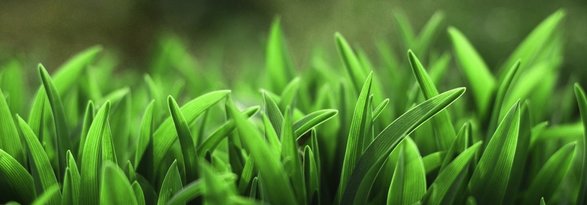



























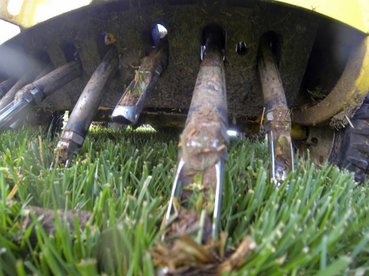
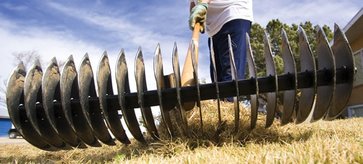
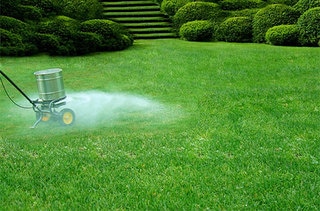
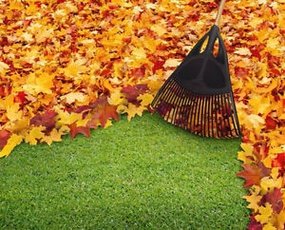
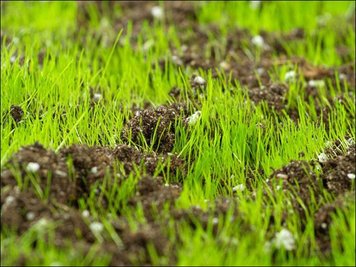
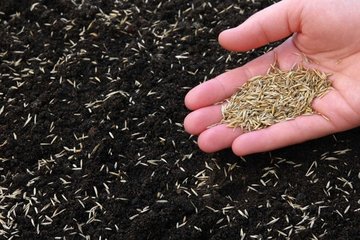



 RSS Feed
RSS Feed